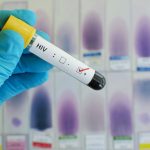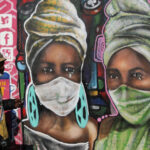WHEN Dr Wadzanai Samaneka began working as a newly graduated doctor, patients who contracted AIDS knew they were going to die. It was a scary time to be a doctor – and an even scarier time to be a sex worker. However, in Zimbabwe and in many other countries in the region, AIDS was prevalent everywhere.
“During my years as a medical student and later as an internist, the diagnosis of HIV infection was like a life sentence. There were no Antiretroviral drugs (ARVs) in Zimbabwe and patients would simply be discharged for home-based care. Not only were patients dying, but even our very own relatives were dying. It was this experience back then that led me to have a desire to find a cure for the devastating illness,” the researcher, who works at the Clinical Trials Research Centre at the University of Zimbabwe, explained.
Samaneka, who graduated with Honours from the University of Zimbabwe, in 1997 and today holds a Master’s Degree in Clinical Epidemiology as well as a Diploma in HIV Management from the Colleges of Medicine of South Africa (CMSA), decided to help find a cure for HIV. The human immunodeficiency virus (HIV) can over time lead to acquired immunodeficiency syndrome (AIDS) and death.
That decision has taken Samaneka on a journey full of discovery, excitement, joy – and huge disappointments. Today, HIV is no longer a life sentence. Thanks to the development of anti-retroviral therapy (ART), which involves using a cocktail of anti-retroviral drugs, people who test positive for HIV can live long, healthy lives. Yet Samaneka remains as focused as ever on a cure.
“Once HIV enters the body some of the virus remains ‘hiding’ in some body compartments and cells regardless of effective ART. Scientists call the hiding virus the ‘HIV viral reservoir’. A combination of HIV cure strategies are being tested in clinical trials, so until we do find a cure, we will keep searching and learning from the negative results,” Samaneka explained.
Samaneka has been involved in conducting clinical trials for adult HIV prevention and treatment, since 2005. Most of that has been conducted in her home country, which by the early 2000s had infection levels higher than almost anywhere else in the world. Conservative estimates put the level of HIV infection by 2000 at 25% of the population. Across Africa, around 2.3 million people died of AIDS in 2003, according to Zimbabwe’s Ministry of Health and Child Welfare.
“All of my research work has been in Zimbabwe – in collaboration with other researchers within the region as well as outside the region. I have played a key role in conducting multiple, multi-site, complex, phase I-IV, clinical trials including studies of first-line, second-line and third-line antiretroviral treatment (ART), and studies of TB diagnostics, treatment, and prevention,” she explained
Her groundbreaking work includes a landmark study that demonstrated the effectiveness of antiretroviral therapy (ART) as prevention.
The trial (known as HPTN 052) showed that anti-retroviral therapy could prevent infections caused by human immunodeficiency virus type 1 (HIV-1) in couples in which one partner is HIV-positive and one partner is HIV-negative.
Following the results of the study in 2015, the World Health Organisation revised its guidelines to include recommendations for universal HIV-1 testing and the provision of ART to all persons with HIV-1 infection, regardless of their CD4+ (white blood cell) count.
Another study proved that early ART initiation reduces the HIV burden and preserves the body’s immune response to HIV. That study, conducted between 2017 and 2019, showed that those who started therapy the earliest still had HIV-infected cells in their blood after one year, but the number of infected cells was lower than those seen in individuals who started a little later. Once again, however, the ART did not wipe out HIV altogether, however.
“ART initiation in earlier stages of acute and early HIV infection reduced but did not eliminate the persistence of HIV-infected cells in blood. This study does provide hope that early ART can be complemented with other curative strategies such as therapeutic vaccinations or passive immunisations as scientists design future cure research studies,” she explained.
According to Samaneka, the studies require considerable resources.
“HIV cure research in particular is intense and requires stringent quality management,” she said.
However, the resource-heavy nature of rigorous studies also means that the results are accurate and stand up to peer review and international scrutiny, pushing forward the boundaries of scientific knowledge.
“Young African investigators should be supported to generate research questions pertinent to the health needs of the African population,” she added.
Samaneka also commended the governmental response to the HIV epidemic in Africa. Some countries, including Zimbabwe, have now achieved the 95-95-95 UN targets (95% of those living with HIV know their status, 95% of those who know their status are on HIV are on life-saving medications and 95% of people who are on treatment are virally suppressed).
“However, the goal to end AIDS by 2030 requires that African governments prioritise and support the HIV cure research agenda,” she said.
While the world waits for a vaccine, Samaneka points optimistically to recent successful hi-tech efforts to eradicate HIV using techniques like stem cell transplants. Stem cell transplants – most famously in two cases, known as the “Geneva” and the “Berlin” patients – have resulted in HIV eradication.
“Gene therapy to eradicate reservoirs is among the cure strategies being tested in clinical trials,” said Samaneka.
While stem cell transplants – also known as gene therapy – are hugely expensive and not currently practical for large numbers of patients, Samaneka is optimistic about the results and what they could mean for HIV prevention in Africa.
Someone who knows Zimbabwe’s governmental response well is Dr Nyaradzo Mavis Mgodi, who today focuses on HIV prevention.
“After having worked in the Zimbabwean Public Health sector for almost 12 years and seeing the relentless morbidity and mortality from HIV/AIDS, in 2007 I was struck by an urgent need to contribute significantly towards curbing the HIV epidemic,” Mgodi shared.
That year, Mgodi decided on a career change; moving from clinical pathology to HIV prevention/treatment research. She joined the University of Zimbabwe – University of California San Francisco Collaborative Research Program as a medical officer.
“I have been conducting clinical trials for over 15 years. I have been privileged to lead studies across four continents – Africa, the USA, Latin America, and Europe,” she explained.
Mgodi co-chaired the first study to show that antibodies can reduce the risk of HIV acquisition (a series of studies called the Antibody Mediated Prevention studies) as well as the HOPE study, which assessed the dapivirine ring.
She currently co-chairs the Clinical Trials Hub of the USAID-funded MATRIX Programme, worked across countries including Zimbabwe, Malawi, Botswana, Uganda, Kenya, Tanzania, Mozambique, Eswatini, South Africa, Peru, USA, and Switzerland, searching for lasting, human-centred solutions and developing innovative biomedical interventions for HIV prevention.
As executive Committee Member and International Principal Investigator for the HIV Prevention Trials Network (HPTN).
she also looks after a worldwide effort to improve preventative measures against HIV.
Locally, Mgodi is perhaps best known for her role in bringing the dapivirine vaginal ring to women worldwide, thanks to her role in two studies, known as ASPIRE and HOPE.
“The Europeans Medicines Agency issued a positive scientific opinion on the ring and subsequently WHO recommended offering the ring as a safe and effective additional prevention choice for women at significant risk of HIV infection as part of a package of prevention options,” Mgodi said of that initiative.
On 6 July 2021, Zimbabwe, through the Medicines Control Authority of Zimbabwe, approved the ring and Zimbabwe became the first country globally to register the ring for HIV prevention.
Mgodi was also involved in showing the efficacy of a new drug, known as long-acting injectable cabotegravir (CAB-LA)
“In July 2022 Zimbabwe was the first African country and first low and middle-income country to approve CAB-LA for HIV prevention,” she said, explaining that the dapivirine ring and CAB-LA are being used together to prevent new HIV infections and change the trajectory of the epidemic.
“We are almost there,” she said.
But there is one more step she feels is necessary, to ensure zero infection rate.
“We know that an HIV vaccine is the world’s best hope of ending HIV. Though there will most likely not be an effective vaccine in the next five years, I think we will continue to make great strides in the development of other innovative products that will contribute towards ending the epidemic,” Mgodi concluded.
For research pharmacist Tsungai Mhembere, also at the University of Zimbabwe Clinical Research Centre, that day cannot come fast enough.
As a Research Pharmacist for over a decade, Mhembere has contributed to the successful implementation of international clinical trials that focus on the prevention of mother-to-child HIV transmission, early treatment of infants with a high risk of HIV acquisition and optimised treatment options for HIV-infected mothers and infants.
“HIV Research has been a platform to provide evidence-based effective HIV prevention and treatment strategies that combat the infection. Ultimately HIV research should influence the adoption and sustainable access of proven cost-effective prevention technologies in all communities that need them,” Mhembere said, the researcher, who is currently based at the Harare Family Care UZ-CTRC clinic housed within Parirenyatwa Hospital.
Useful links:
https://www.hptn.org/research/studies/hptn052
https://pubmed.ncbi.nlm.nih.gov/31981713/
https://www.who.int/publications/i/item/9789240028678
https://www.aidsmap.com/news/jul-2023/first-person-may-be-cured-hiv-after-stem-cell-transplant-without-ccr5-mutation














